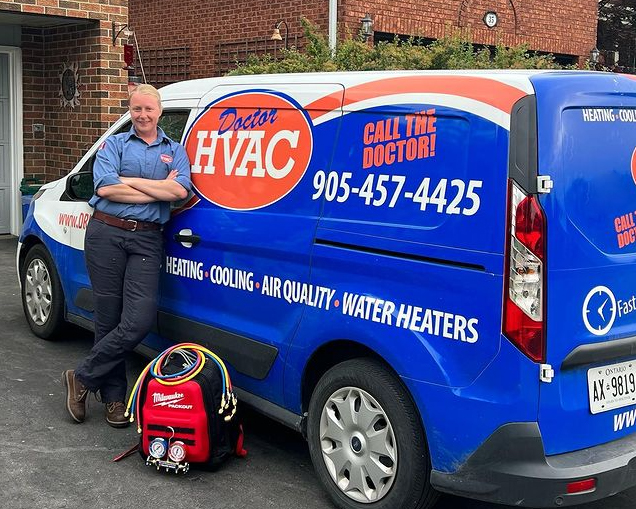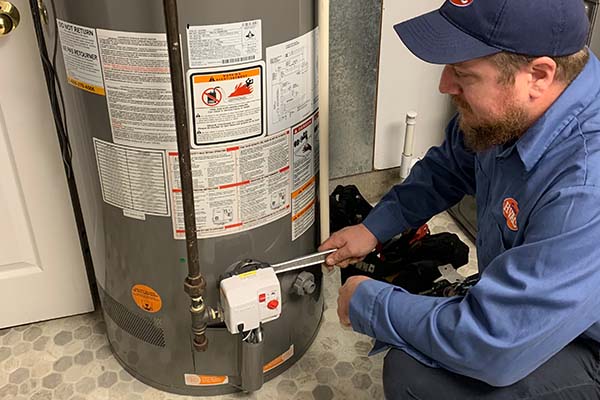Whether you’re a homeowner doing HVAC preventative maintenance, or a seller or buyer evaluating a house for the market, HVAC inspections are an important part of knowing if a home is in tip-top shape.
HVAC preventive maintenance can be daunting if you’re unsure of what to look for, so an HVAC inspection checklist is a handy tool for assessing the functionality and efficiency of a home’s heating, ventilation, and air conditioning systems.
To ensure that you (or any HVAC technicians you invite inside your home) are covering all the bases in a consistent and efficient manner, we’ve compiled the Ultimate HVAC Inspection Checklist for your reference.
Table of Contents
Why You Need an HVAC Inspection
Buyers
For buyers, an HVAC inspection provides peace of mind and helps avoid unexpected expenses after purchasing a home. An inspection reveals the current condition of the home’s HVAC equipment, including the age, efficiency, and any existing issues or potential problems.
Having an HVAC inspection checklist on hand when you’re looking at a potential house allows you to make informed decisions about the property. Plus, you can negotiate repairs or replacements as needed before finalizing the purchase.
An HVAC inspection identifies any deficiencies or areas requiring maintenance or upgrades, allowing you to estimate the potential costs associated with repairs or replacements. This information can then be factored into the overall budget for purchasing the home.
Armed with the findings of the HVAC inspection, you can negotiate with sellers to either lower the asking price to accommodate necessary repairs or request that the seller address the issues before closing the deal.
In short, an HVAC inspection can result in significant cost savings for you!
Sellers
For sellers, conducting an HVAC inspection before listing the property is just as beneficial. A well-maintained HVAC system adds to the overall appeal and marketability of the home. Providing documentation of recent inspections or servicing demonstrates to potential buyers that the property has been properly cared for and may justify a higher asking price.
Addressing any HVAC maintenance issues before listing the home can prevent last-minute surprises during the negotiation process. Proactively addressing maintenance or repair needs ensures a smoother transaction and reduces the risk of deals falling through due to unexpected issues.
Homeowners
Regular HVAC maintenance inspections offer ongoing benefits for homeowners, too. When you identify minor issues before they escalate into major problems, not only will this help you avoid costly emergency repairs, but it can also prolong the lifespan of the home’s HVAC equipment.
A well-maintained HVAC system operates more efficiently, leading to lower energy consumption and reduced utility bills. Inspections ensure that the system is clean, calibrated, and functioning optimally, maximizing energy efficiency and cost savings over time.
What is Included in an HVAC Inspection?

An HVAC inspection involves a comprehensive evaluation of the heating, ventilation, and air conditioning system’s indoor and outdoor components.
There are several overlapping elements for many HVAC systems, so regardless of the unit, you should incorporate these tasks into your HVAC inspection:
- Heating and Cooling Elements
- Inspect burners, heat strips, spark igniters, flame sensors, evaporator coils, condenser coils, and condensate drain lines.
- Air Filters
- Check air filters on all units for excessive dust, dirt, ice buildup, or other obstructions hindering proper airflow. Regular cleaning of air filters is essential for maintaining air quality.
- Blower Motor
- Inspect blower motor and fan blades for wear and tear.
- Lubricate moving parts as necessary.
- Check for proper operation and airflow.
- Condensate Drain
- Inspect condensate drain lines for clogs or blockages.
- Clear any obstructions to prevent water damage and mold growth.
- Electrical Components
- Inspect electrical connections, wiring, and components for signs of wear, corrosion, or damage.
- Tighten loose connections and replace damaged wiring or components as needed.
- Pressure and Charge
- Measure the pressure and charge of the units or systems to enhance energy efficiency and prolong system lifespan.
- Ductwork
- Inspect upper and lower ducts, along with the insulation surrounding them, for any damage such as damp spots or mold.
- Inspect ductwork for any leaks, cracks, or damage
- Check for proper insulation and sealing to ensure no air leakage.
- Ensure that ducts are free of obstructions that could impede airflow.
The Ultimate HVAC Inspection Checklist

Indoor Checklist
- Thermostat Settings
- Check the thermostat settings to ensure they are set correctly for the desired comfort level.
- Verify that the thermostat is responding accurately to temperature adjustments.
- Air Filter Condition
- Locate the air filter(s) in your HVAC system.
- Inspect them for dirt, dust, and debris buildup.
- Replace or clean the air filters as needed to ensure proper airflow and indoor air quality.
- Registers and Grilles
- Clean and adjust registers and grilles for optimal airflow distribution.
- Inspect registers and grilles for blockages or dirt buildup.
- Furnace
- Check the furnace for any visible signs of damage or corrosion.
- Inspect the burner assembly for cleanliness and proper ignition.
- Verify that the blower motor is functioning correctly and lubricate if necessary.
- Check for any unusual noises or odors during operation.
- Hot Water Heater
- Inspect the water heater for leaks or corrosion.
- Verify the temperature (ensure the actual water temperature matches the temperature setting).
- Inspect and clean the burners.
- Check the relief valve operation.
- Inspect venting system.
- Drain and flush the water heater to remove sediment buildup if recommended by the manufacturer.
- Air Quality Equipment
- Inspect any air quality equipment such as humidifiers, dehumidifiers, or air purifiers for proper operation.
- Clean or replace filters and humidifier pads as needed.
- Verify that these systems are maintaining indoor air quality and humidity levels within recommended ranges.
Outdoor Checklist

- Condition of the External Unit
- Inspect and clean the unit.
- Check the outdoor condenser unit for any visible damage, such as dents or corrosion.
- Inspect the condensate drain pan, drain line, and p-trap for clogs or leaks.
- Check that the wiring and blower assembly is in good condition.
- Check for signs of refrigerant leaks, such as oil stains around the unit.
- Ensure that the unit is level and securely mounted on its base.
- Clearance from Debris
- Remove any debris, leaves, or vegetation from around the outdoor unit.
- Ensure that there is at least 2 feet of clearance around the unit for proper airflow.
- Air Conditioner
- Inspect the condenser coils for dirt, dust, or debris buildup.
- Clean the condenser coils with a soft brush or vacuum to remove any debris.
- Check the refrigerant lines for leaks or damage and repair as needed.
- Heat Pump
- Ensure thermostat sensors are working.
- Check for ice, dirt or debris on outdoor coils.
- Ensure the pump is off the ground and away from any pooling water.
- Inspect the heat pump for any visible signs of damage or corrosion.
- Examine the blower belt for wear and tension.
- Inspect the lines for refrigerant leaks.
- Verify the correct voltage and ensure no loose electrical connections.
- Check the defrost cycle to ensure proper operation during cold weather.
- Verify that the reversing valve is switching between heating and cooling modes correctly.
How Often Should You Inspect Your HVAC System?

You should inspect all of your HVAC systems at least once a year, preferably in the fall or spring, to ensure that they are ready to handle more severe weather.
Some homeowners prefer to have their HVAC systems inspected twice a year, once in the spring before the cooling season begins and once in the fall before the heating season starts. This approach ensures that the system is ready to handle the demands of the upcoming season and helps identify any potential issues early on.
If you’ve recently installed a new HVAC system or replaced major components, such as the furnace or air conditioner, it’s advisable to perform an HVAC inspection shortly after installation to ensure everything is working correctly. After that, you can revert to annual inspections unless otherwise recommended by your HVAC technician.
You should always check the manufacturer’s recommendations for your specific HVAC system. Some manufacturers may suggest more frequent inspections or maintenance to maintain warranty coverage and prolong the equipment’s lifespan.
Ultimately, the goal of regular HVAC inspections is to catch any issues early, optimize system performance, and prevent costly repairs or breakdowns. Work with qualified HVAC technicians to determine the most appropriate inspection schedule based on your system’s needs and usage patterns.
When to Call a Brampton HVAC Expert

Most homeowners are quite capable of doing a DIY inspection and preventive maintenance tasks, but sometimes the HVAC inspection checklists reveal a bigger problem. Due to the complexity of these systems and the potential safety risks involved, there are times when you need to call in the big guns. Here are some situations where bringing in professional HVAC contactors is a good idea:
- Complex Furnace & AC Repairs: When your HVAC system experiences significant issues such as compressor failures, refrigerant leaks, or electrical malfunctions, professional expertise is crucial. Attempting to diagnose and repair these complex problems without the proper knowledge and tools can result in further damage to the system or even pose safety hazards.
- Furnace & AC Installation or Replacement: Installing a new HVAC system or replacing major components requires specialized knowledge and skills. Professional technicians are trained to properly size and install equipment according to manufacturer specifications and local building codes, ensuring optimal performance and efficiency.
- Gas Furnace Maintenance: Gas furnaces pose potential safety risks, including carbon monoxide leaks and fire hazards. Professional technicians have the expertise to inspect and maintain gas furnaces safely, including checking for gas leaks, inspecting the heat exchanger, and ensuring proper ventilation.
- Ductwork Inspections: Inspecting and repairing ductwork requires specialized equipment and expertise to identify leaks, blockages, or other issues that can affect airflow and energy efficiency. Professional technicians can conduct thorough ductwork inspections and recommend necessary repairs or improvements.
- HVAC System Tune-Ups: Regular HVAC maintenance and tune-ups are essential for maximizing your systems’ lifespan and efficiency. Professional technicians have the knowledge and experience to perform comprehensive inspections, cleaning, and adjustments to ensure your system operates at peak performance.
Let Dr HVAC Handle Your HVAC Maintenance Checklist
When it comes to HVAC services, Dr. HVAC is your trusted partner for reliable and professional assistance. Their team of experienced technicians is equipped to handle all your HVAC needs, from routine maintenance to complex repairs and installations.
Contact Dr. HVAC for a thorough inspection and quote for services, and have peace of mind knowing that your HVAC system is in good hands.

